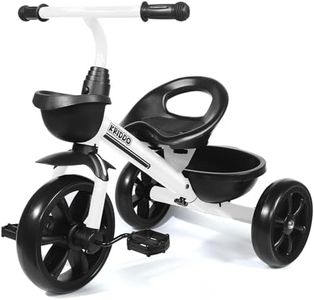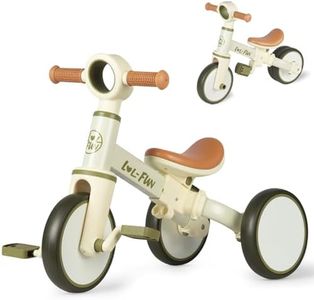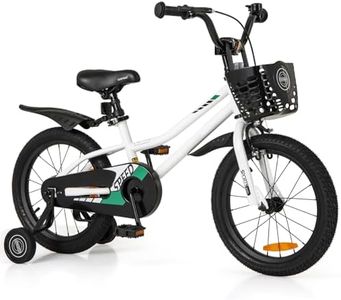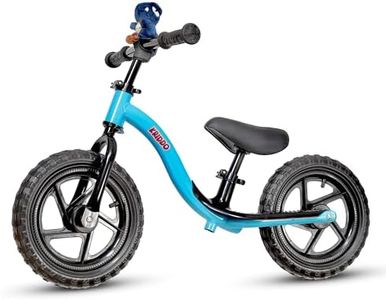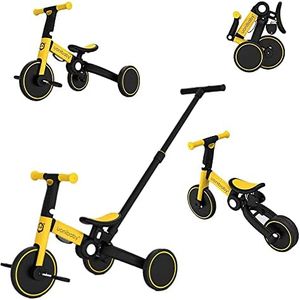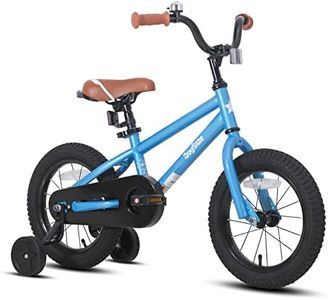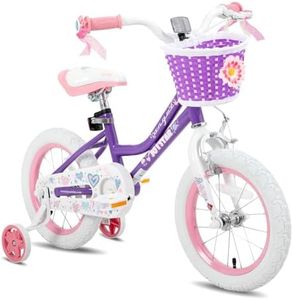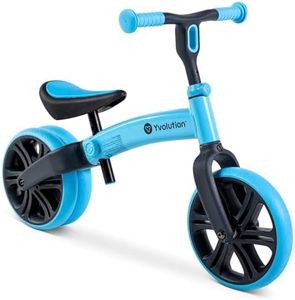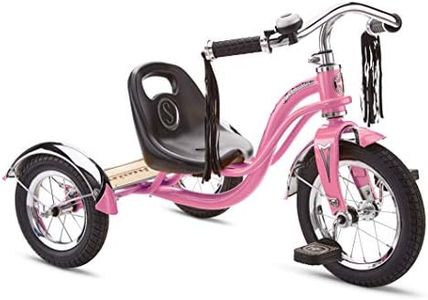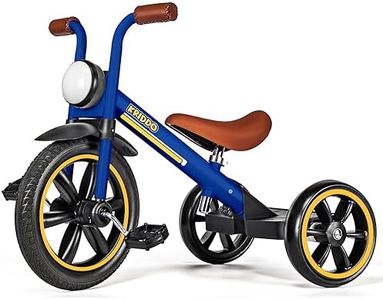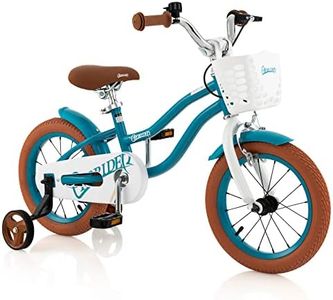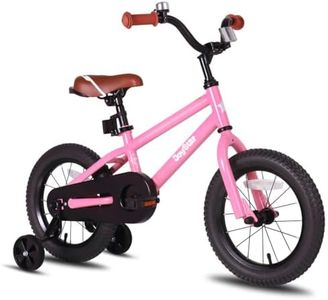We Use CookiesWe use cookies to enhance the security, performance,
functionality and for analytical and promotional activities. By continuing to browse this site you
are agreeing to our privacy policy
10 Best Bikes For 4 Year Olds
From leading brands and best sellers available on the web.Buying Guide for the Best Bikes For 4 Year Olds
Choosing a bike for a 4-year-old is an exciting step as it often marks the beginning of independent riding and outdoor adventure. When picking out a bike, it’s important to focus on safety, comfort, and ease of use, ensuring that your child feels confident and enjoys the riding experience. Here are the key specifications to consider so you can find the perfect match for your child’s needs and abilities.Wheel SizeWheel size refers to the diameter of the bike's wheels, usually measured in inches. For children, the right wheel size ensures a comfortable and safe ride, as it directly affects how easily they can get on, off, and control the bike. For 4-year-olds, wheel sizes typically range from 12 to 16 inches. Smaller sizes are better for petite children or those just starting out, while larger wheels suit taller or more confident riders. To pick the right size, check if your child can stand over the bike comfortably with both feet flat on the ground—it should feel stable and not too big to handle.
Frame MaterialThe frame material is what the body of the bike is made of, commonly steel or aluminum for kids' bikes. Frame material is important because it affects how heavy the bike is and how easy it is for a child to maneuver. Steel frames are usually sturdier but heavier, ideal for rough use but may be harder for smaller kids to handle. Aluminum frames are lighter, making the bike easier to pick up, turn, and ride, but may be a bit more delicate. Consider how strong and active your child is—if they’ll be carrying their bike or if you often transport it, a lighter frame is usually preferable.
Braking SystemThe braking system is how the bike slows down or stops. For young children, bikes usually feature either coaster brakes (which work by pedaling backward) or hand brakes (levers on the handlebars). Coaster brakes are simple and intuitive for most beginners who may not yet have strong hand coordination. Hand brakes are a good choice for kids who are developing more advanced motor skills and are ready for bikes with more features. Consider your child's physical coordination—if they’re still learning, stick with coaster brakes, but consider hand brakes if they show a good grasp of balance and control.
WeightBike weight makes a significant difference in how easily a child can control and ride their bike. A bike that’s too heavy can be discouraging and hard to maneuver, especially for younger or smaller children. Lighter bikes are generally easier to manage and more enjoyable for young riders. To select the right weight, look for a bike that your child can pick up without struggling, as this gives them more control and confidence on their own.
AdjustabilityAdjustability usually refers to features like an adjustable seat or handlebars, which allow the bike to grow with your child. This is important because kids grow quickly at this age, and a bike that can adjust to fit them for several months or years is a better investment and provides a more comfortable, safer riding experience. Look for a bike with a seat and handlebars that can be easily raised or lowered, making sure your child’s feet can reach the ground and the handlebars are within easy reach.
Training WheelsTraining wheels are small, additional wheels on the rear axle that help keep the bike upright while a child is learning to balance. Many 4-year-olds are still developing balance and may feel more confident with them in place. However, some children are ready to ride without training wheels, or may learn faster using a balance bike (no pedals, propelled by the child’s feet). Think about your child's current balance skills and comfort level with two wheels—training wheels are great for beginners, but if your child is eager and coordinated, you can consider skipping them or moving to a balance bike.
